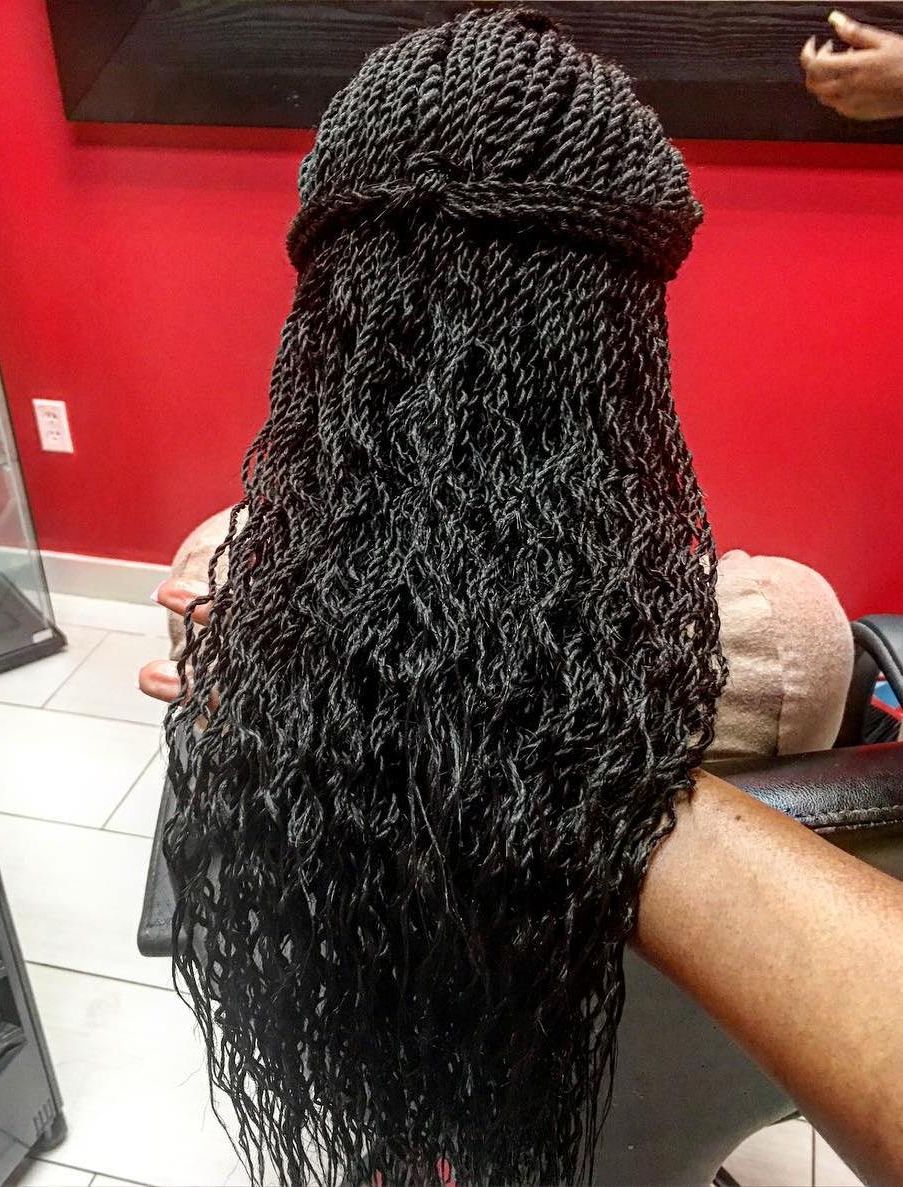
Have you ever tried a Chinese finger trap? Well, that is a good example of how braiding can produce amazing strength. The braid also means more fibers are intertwined in a smaller space, which adds strength. This means that the rope will stay straight (instead of twisting in one direction like with twisted ropes). When a rope is well braided, it will have many fibers which are all aligned in the same direction. If you have rope with an obvious twist and tends to twist in one direction when you put it down, then this is twisted rope. And finally the strands are spun into rope. They are made by first spinning fibers into yarns. It was normally made with 3 strands that were twisted together. This was the most common rope throughout history. Ropes can be made in numerous ways, but we can break them all down into three categories: twisted rope, braided ropes, and kernmantle rope. This cheap natural fiber rope easily frays. However, they have drawbacks like being susceptible to rot and mildew, fraying, and shrinking when they get wet. The main benefit of natural fibers is that they are cheap. The strength of the natural fiber rope depends largely on its construction, though some fibers are better than others. Originally ropes were made out of natural fibers like hemp, and you can even make your own natural fiber rope in a survival situation out of plants you find. Natural Fibers (Hemp, Sisal, Cotton, etc)

However, its many downsides include that it isn’t very strong and it degrades in UV lights (sunlight). It doesn’t stretch much, which makes it suitable for some purposes – like a ski tow line. Aside from being cheap, its other benefits are that it floats and is very lightweight. Propylene is often used as a cheap alternative to nylon in braided ropes. The downsides of polyester as a rope material are that it gets slippery, it can get mildew, doesn’t float, and will fray when cut. Its main benefit compared to nylon is that it doesn’t lose strength when wet, so it is a good choice for uses like boat towing lines or anchors. It is almost as strong as nylon, but without as much stretch. Polyester is another synthetic rope material. The downsides of nylon rope are that the material does not float, it loses its strength when wet (about 15-25% of its strength!), and the stretchiness is not always preferable. It also has a lot of stretch to it, which means it can absorb shock. This is the best material for most rope uses.
Rope twist how to#
That is why it is so important that you know how to choose rope. Likewise, some materials are much more suitable for certain tasks. There are a lot of ways to make rope, and some are far superior to others. Twisted rope has an interesting characteristic.By definition, rope is simply any thick, long cord which is made by twisting or braiding together pieces hemp, sisal, nylon, or other materials.

How to know if the rope is twisted correctly? Maybe even a colorful jump rope is in store for me in the future :).

Twisting rope can provide a great looking rope or a core for many projects. This technique may be helpful in survival situations, but in crafting as well. In the modern days, machines twist our ropes, but knowing how to make your own is something a rope crafter should know in my opinion. It can be made out of a variety of materials (from plastic bags to grass, bark, animal skins, etc.) and the combined strength of twisted rope is naturally greater than that of a single strand. I have long been amazed by the beautiful look of twisted rope as well as with the way is keeps the twisted shape, even when the ends are not finished with a knot or splice. In this article I will show you how to make rope, by hand.

How to tie dye paracord with fabric dye.How to make rainbow paracord using Kool-aid.How to make an adjustable paracord bracelet.Finishing paracord projects in a classy way.How to attach a buckle to a paracord bracelet.How to make rope by hand- twisting rope.Bracelet sizing- how long should a bracelet be to fit?.Attaching a buckle- single core bracelets.Using collars on your turk’s head knots.Double core bracelet setup with a single working end.


 0 kommentar(er)
0 kommentar(er)
